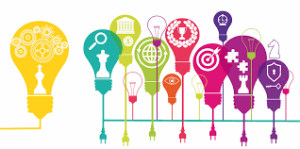If you followed my previous two blogs on ideas and if you are anything like my students, you and/or your team have had a great time generating ideas. You have been on a tear. The juices were flowing, bolts of creativity were flashing and new, innovative and sometimes crazy ideas kept popping up as you discussed your passions, likes and dislikes, dreams and aspirations. Sometimes the ideas shifted and changed as you built off of each other. You may have a sheet or two or more of ideas in front of you. “The game is afoot,” as Sherlock Holmes would say. Like Sherlock, you have to sift through a lot of ideas to find the one that is worth digging deeper into. We will introduce you to I-BET, the Initial Business Evaluation Tool that will help you sort your ideas.
Warren Buffett, the well known investor and CEO of Berkshire Hathaway, is known to decide within five minutes whether to do a deal or not. He can do this because he has spent a lifetime thinking about what he wants to do, what his competence is, what kind of people he wants to work with and what the financial returns will be. Mr. Buffett is one of a kind, but we can learn from his discipline and approach. With a bit of practice and experience, you too will get good enough to sort through ideas quite rapidly.
The Screening Filter
You will need to screen your ideas to settle on your starting idea. They are five filters or steps in I-BET (Initial Business Evaluation Tool). You will go through your list of ideas and settle upon your initial best idea using the filters. Please note that there are many ways to do such a screening, be it Canvas that is used by Eric Ries’ Lean Startup adherents, or Business Model Generation as enunciated by Alexander Osterwalder & Yves Pigneur, just to name a few. Use the method that works best for you. I have personally found the I-BET screening filter easiest to use.
We will discuss each filter in detail in upcoming posts.
Till then, let the creative juices flow and keep building on that list!
Verinder Syal, author: Discover The Entrepreneur Within, now also available in an audio version.





